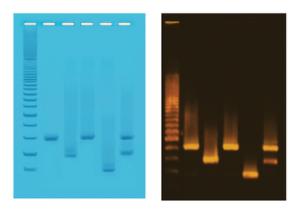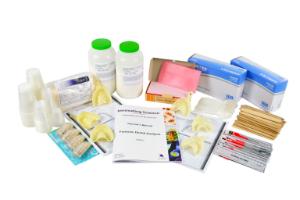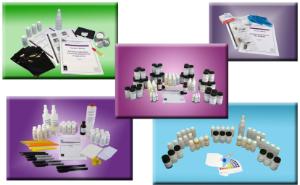Forensic Biology: Science Gets Criminal. Plus, a free handout from AccessScience
Access to this content is available to Ward’s World readers for free from McGraw Hill’s AccessScience, an award-winning, digital STEM resource that provides immediate, authoritative answers to students’ thirst for scientific knowledge on topics such as climate change, virology, pollution, and more. Ward’s World and McGraw Hill have partnered to offer educators a no-obligation, free trial subscription to this product. Request your free trial today and discover how valuable AccessScience can be for you and your students.
High School
Forensic biology uses biological techniques to analyze evidence in criminal investigations, including DNA, blood, and tissues. Forensic biologists collect, preserve, and analyze evidence to help identify suspects, establish links between suspects and victims, determine causes of death, and reconstruct crime scenes. This field is essential in pursuing justice and remains at the forefront of modern criminal investigations.
Forensic biology brings science to life by linking biology with real-life mysteries, making it a perfect addition to your lesson plan. We’ve uncovered some of the key evidence that shows how these concepts will leave a lasting impact on your students and encourage their love for science:
Practical Relevance:
Forensic biology is the scientific backbone of crime scene investigation, helping to solve complex cases by analyzing biological evidence. By introducing this topic, you show your students how science directly impacts society, helping bring justice to victims and closure to families.
One of the most famous crimes solved by forensic biology is the case of the "Golden State Killer." Using genetic genealogy, investigators identified and arrested former police officer Joseph James DeAngelo, connecting him to a decades-long crime spree. This case showcased the power of DNA analysis and highlighted the potential of using genetic genealogy to solve cold cases.
This relevance will capture students’ attention and emphasize the importance of scientific knowledge beyond the classroom.
Multidisciplinary Learning:
Forensic biology integrates various scientific disciplines, making it a perfect way to demonstrate the interconnectedness of subjects. From biology and genetics to chemistry and physics, students can explore how different sciences work together to understand a situation comprehensively. This multidisciplinary approach enhances critical thinking and problem-solving skills, fundamental abilities for any budding scientist.
Engaging and Interactive:
Forensic biology is not confined to textbooks and classroom lectures alone. Students become active participants in the learning process using hands-on activities and simulated crime scene investigations. They’ll be thrilled to take on the roles of forensic scientists, analyze evidence, conduct experiments, and solve mysteries. Check out some examples of these activities in the Recommended Products list below.
Ethical Discussions:
Students can engage in thought-provoking discussions about ethics and the implications of scientific discoveries. As they explore topics like DNA databases, genetic privacy, and the use of forensic evidence in court, they'll develop a deeper understanding of the societal impact of scientific advancements.
Career Exploration:
Forensic biology lessons may inspire students to pursue a career they may have never considered—unless they were already fans of the fictional CSI TV series depicting the riveting cases of talented crime scene investigators.
You can help students visualize exciting professions like these where their passion for science can make a real difference in the world:
- Forensic DNA Analyst: Analyzes DNA samples from crime scenes to create profiles and compare them to suspects' DNA.
- Forensic Serologist: Identifies and analyzes bodily fluids (blood, semen, saliva) found at crime scenes to determine their origin and assist in investigations.
- Forensic Anthropologist: Examines skeletal remains to determine the identity, age, sex, and potential cause of death.
- Forensic Entomologist: Studies insect activity on corpses to estimate the time of death and provide crucial information in homicide investigations.
- Forensic Toxicologist: Analyzes biological samples to detect drugs, alcohol, and poisons relevant to criminal cases and post-mortem examinations.
- Crime Scene Investigator (CSI): Collects and preserves biological evidence at crime scenes for further analysis and use in court proceedings.
- Forensic Pathologist: Conducts autopsies and investigates the cause and manner of death in suspicious cases.
- Forensic Odontologist: Uses dental records and analysis to identify victims and match bite marks to potential suspects.
- Forensic Botanist: Identifies plant materials at crime scenes, which can provide valuable information about locations and times of incidents.
- Wildlife Forensic Specialist: Analyzes biological evidence related to wildlife crimes, such as poaching and illegal trafficking.
By introducing the fascinating world of forensic biology, you can engage your students in an intellectually stimulating and relevant way, inspiring them to become passionate about science.
Download McGraw Hill’s AccessScience article, Forensic Biology, covering concepts on evidence detection, screening and interpretation, DNA extraction, genetic markers, and more. The free download also includes assessment questions and answers you can use to test student understanding.
Recommended Products
[StartProductBlock]

PCR-Based DNA Fingerprinting Kit
Plasmid DNA, when amplified by PCR, provides materials that represent individual DNA profiles. Students use these outcomes to solve a crime.
[EndProductBlock]
[StartProductBlock]

Forensic Dental Analysis
Introduce students to forensic dentistry while they try and identify the suspect in the case.
[EndProductBlock]
[StartProductBlock]

Introduction to Forensics Analysis
Introduce students to the forensic fields of hair, fingerprint, soil, mineral, drug, and poison analysis. Five labs in each bundle.
[EndProductBlock]
